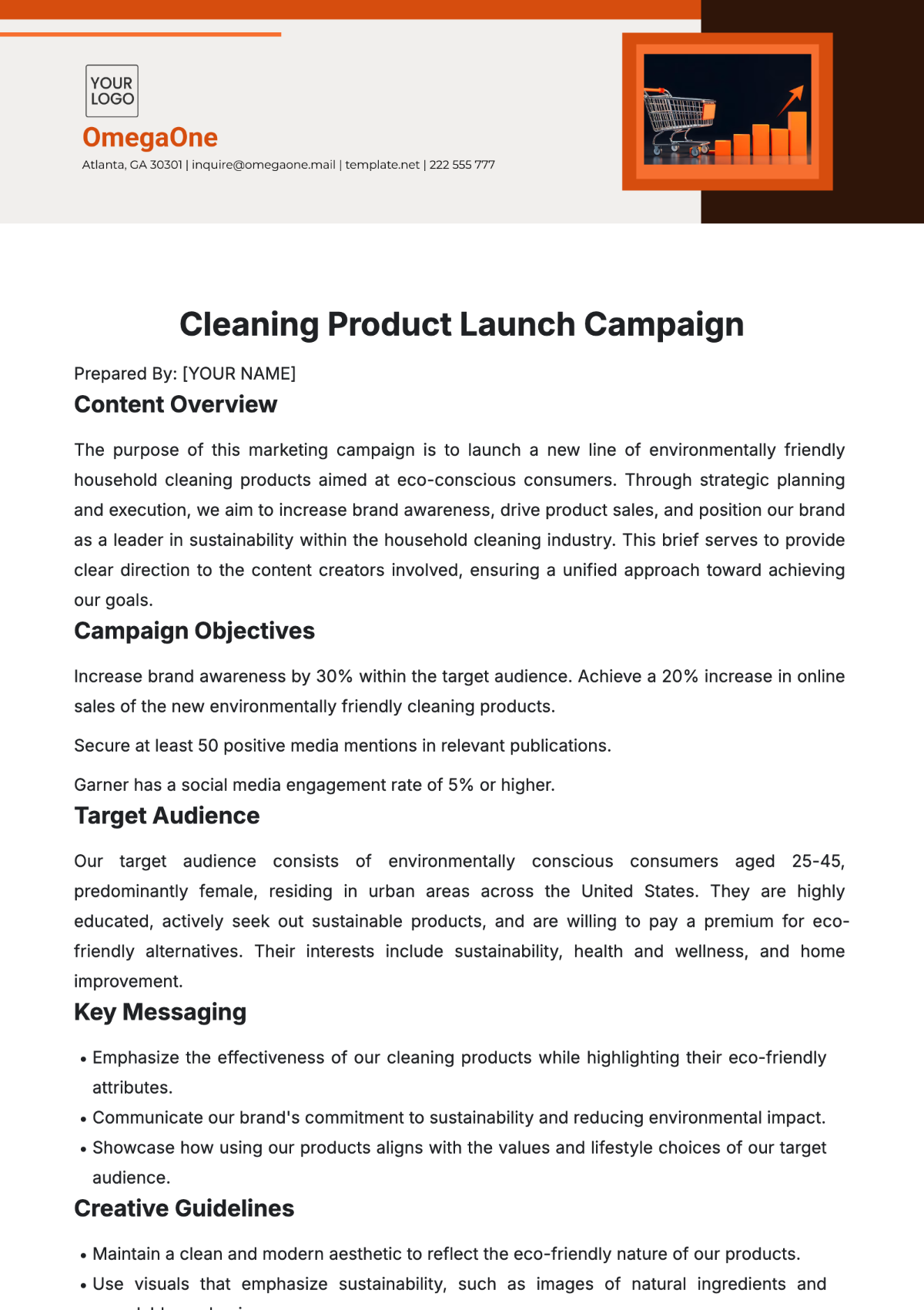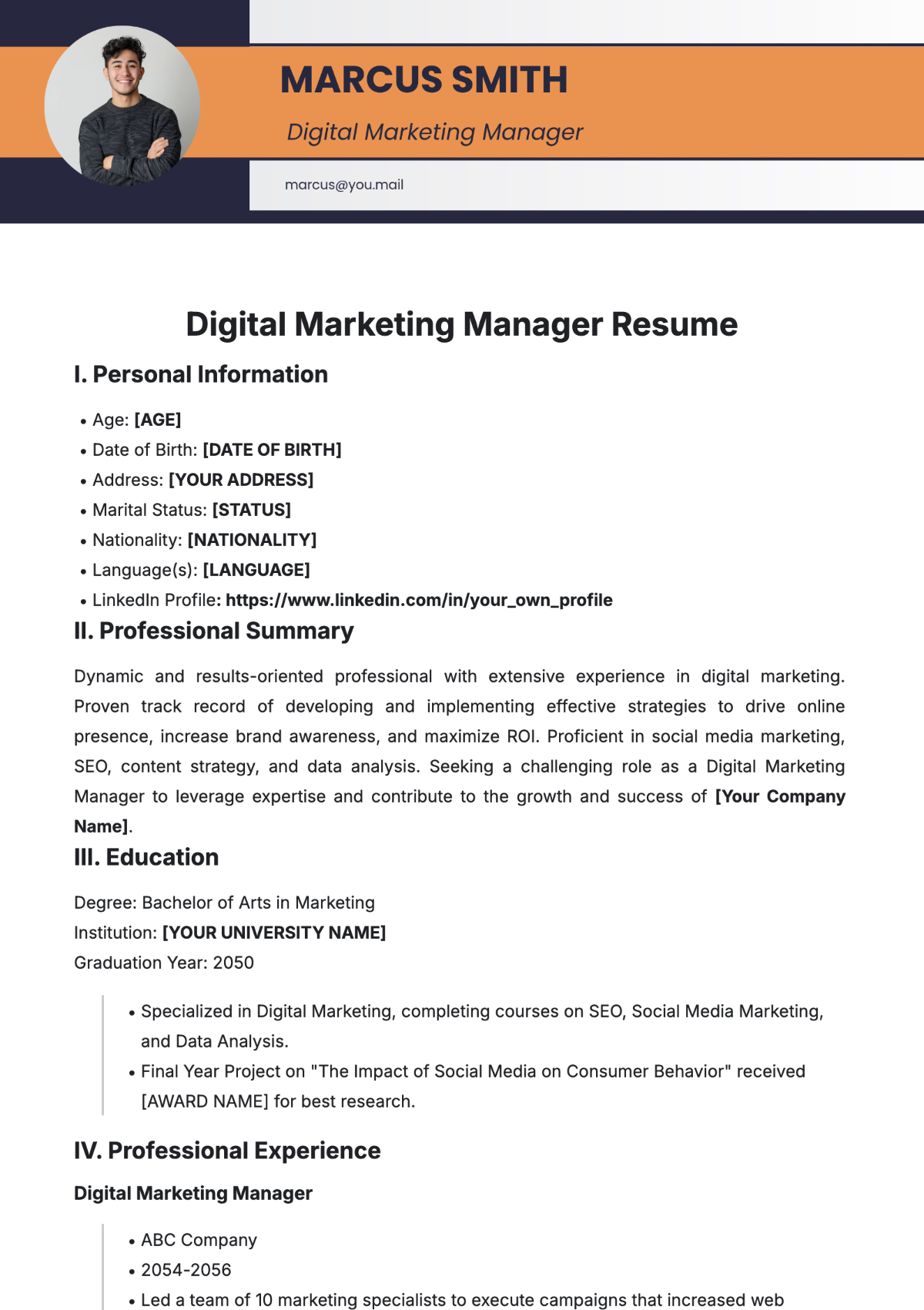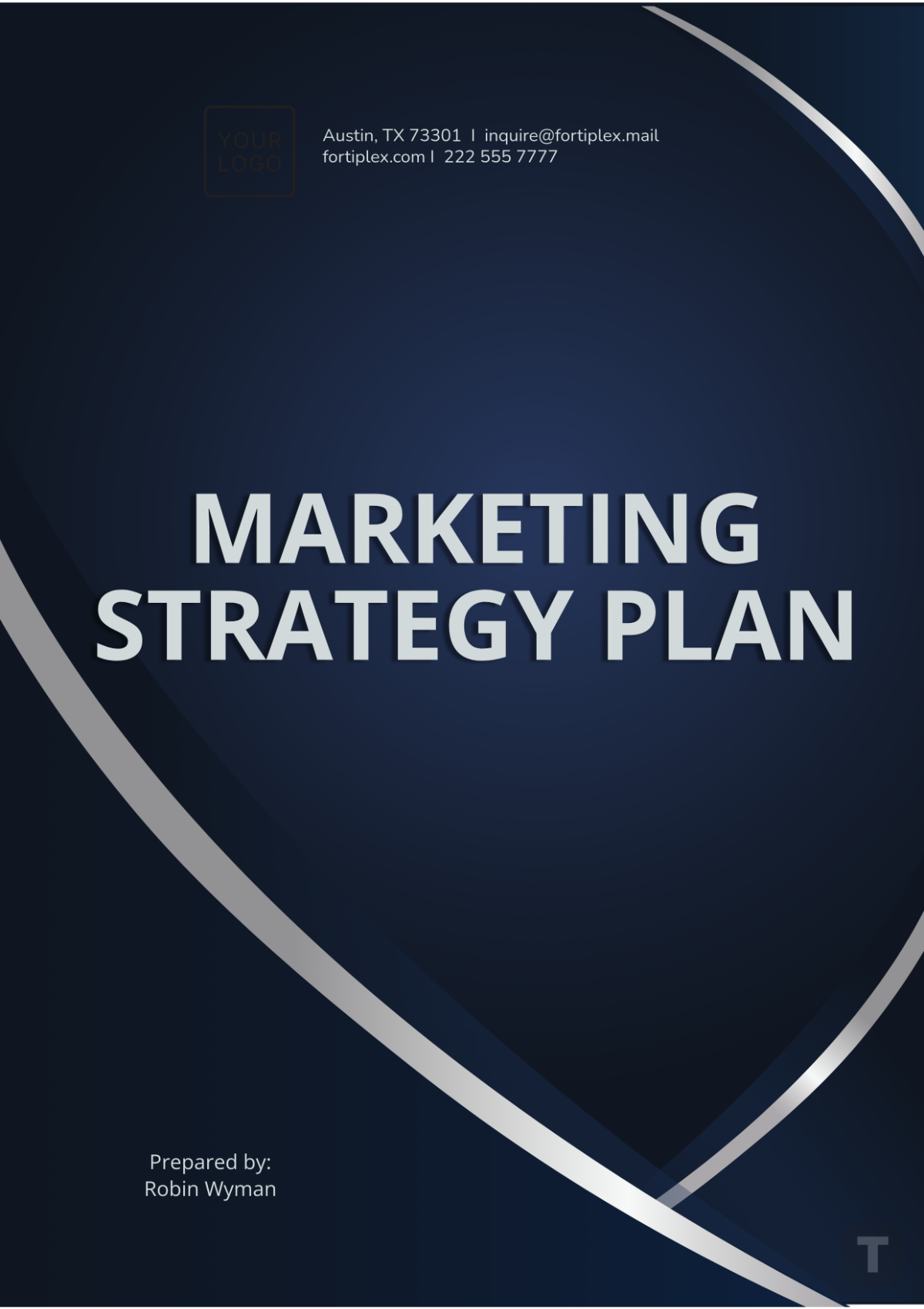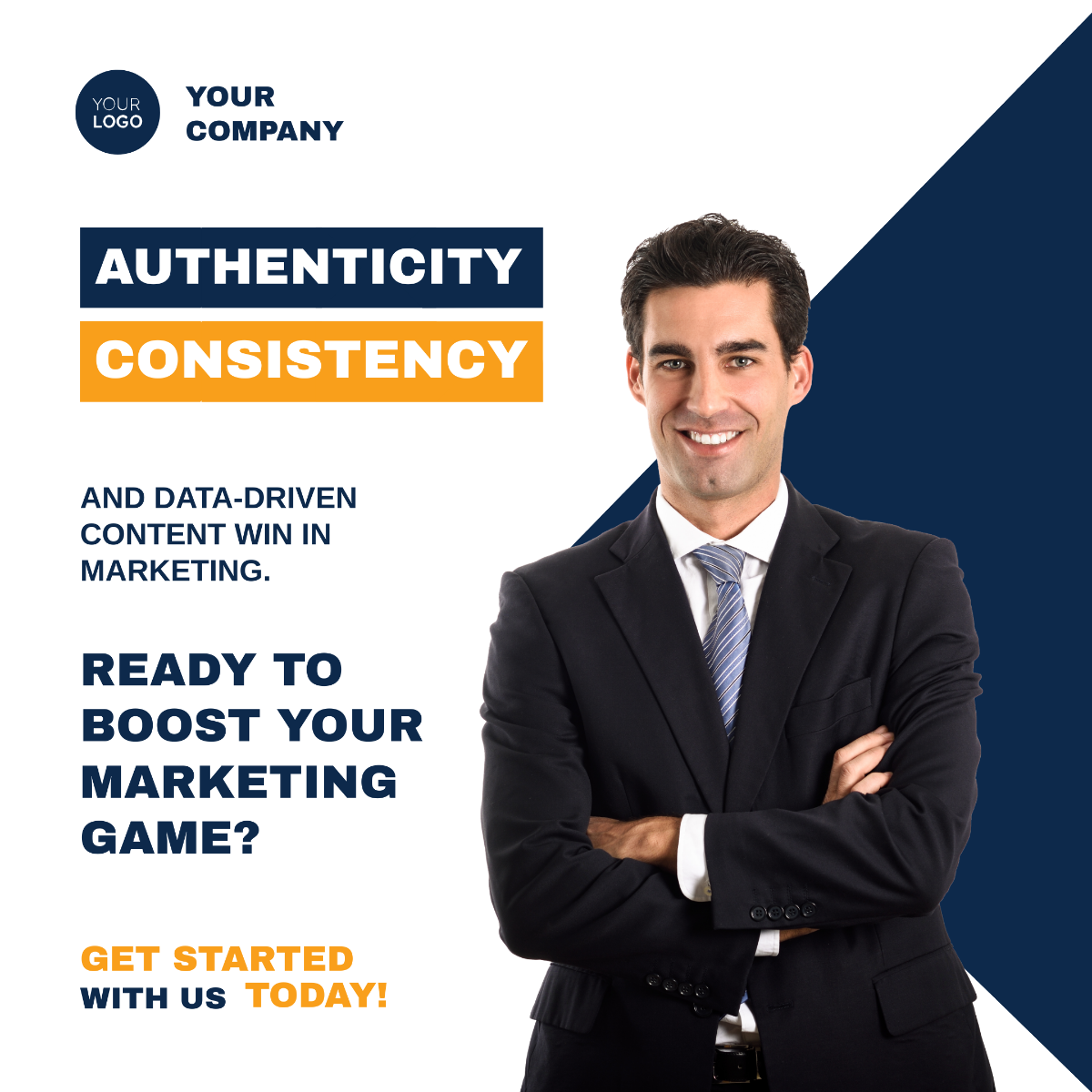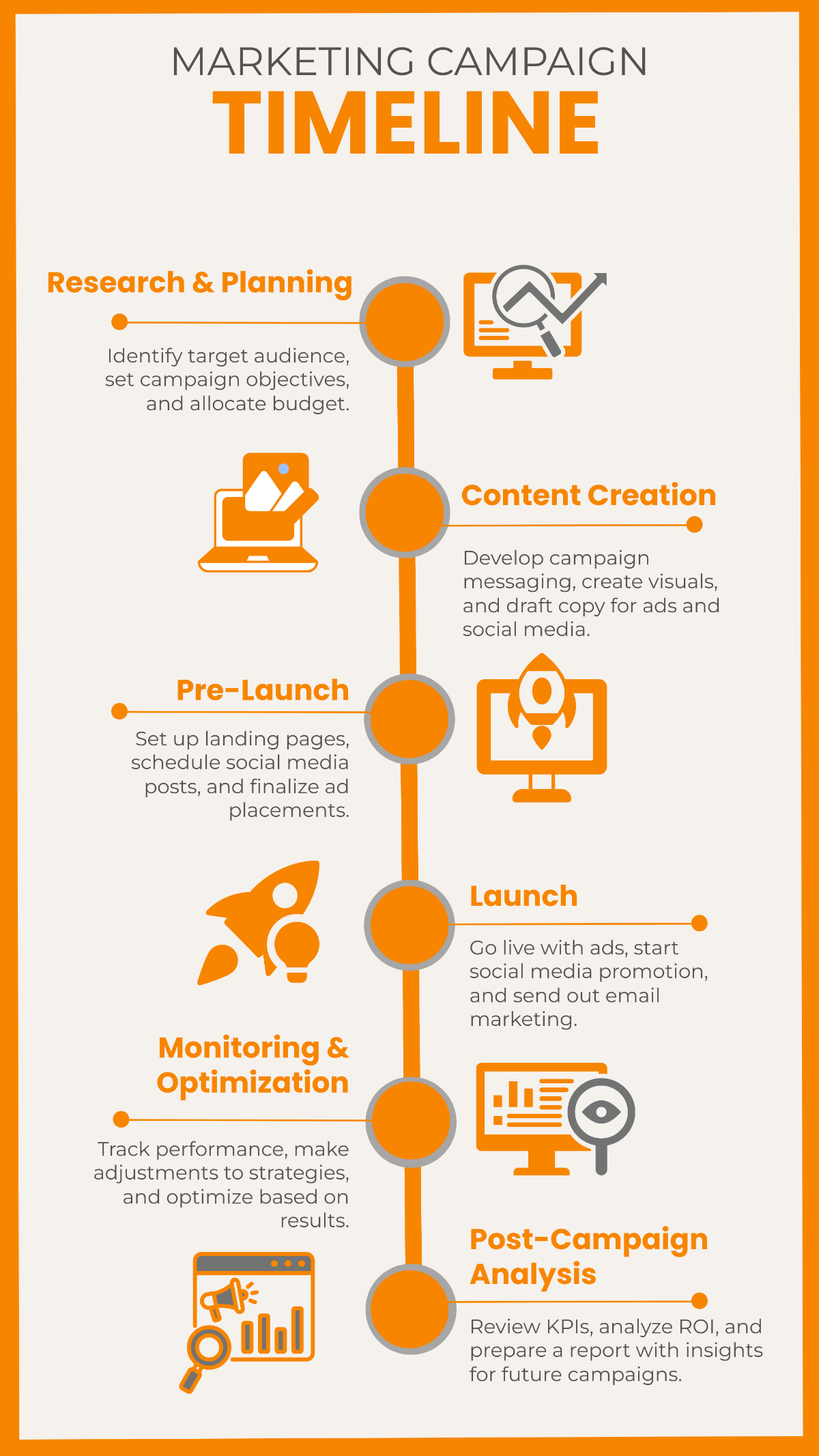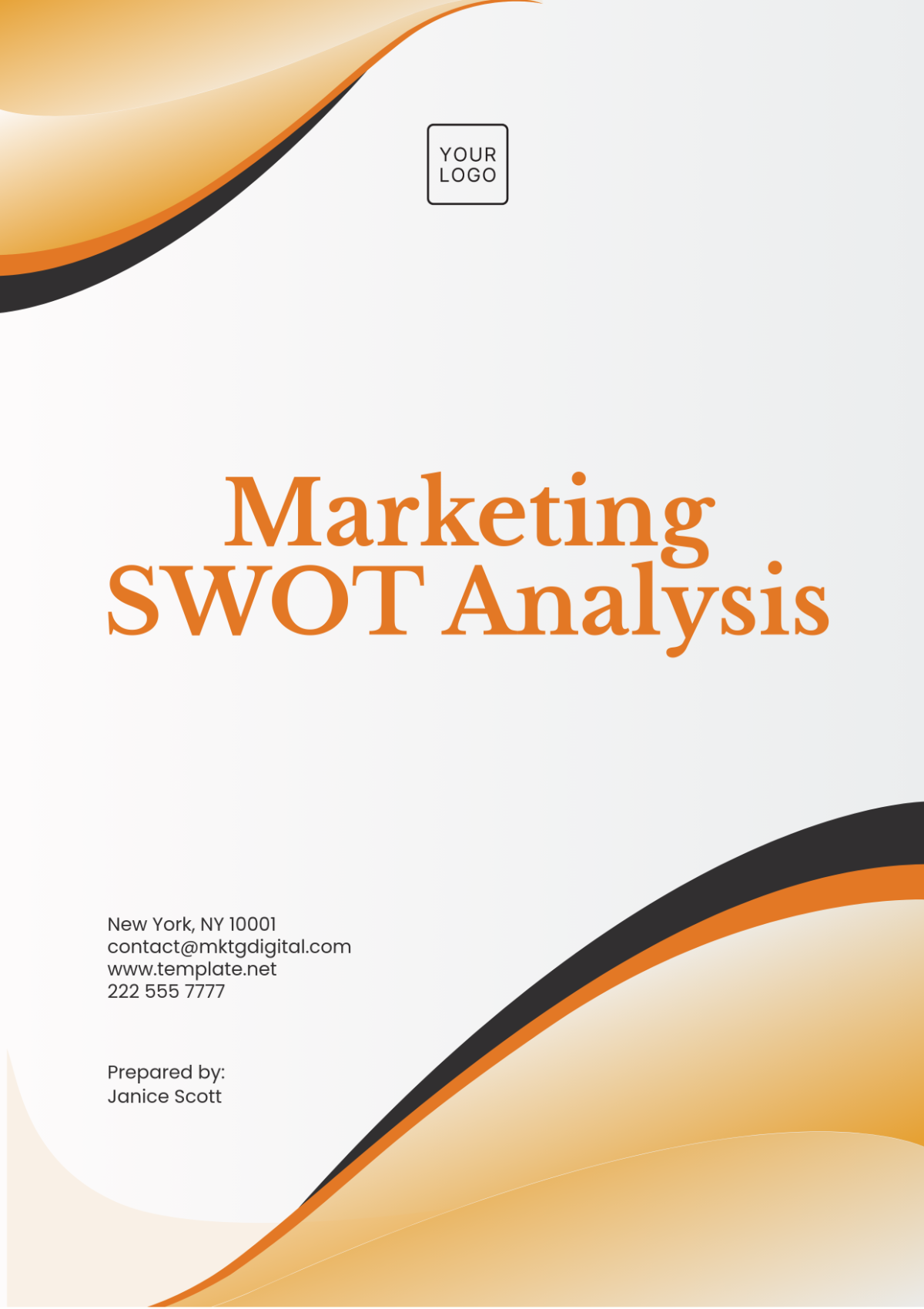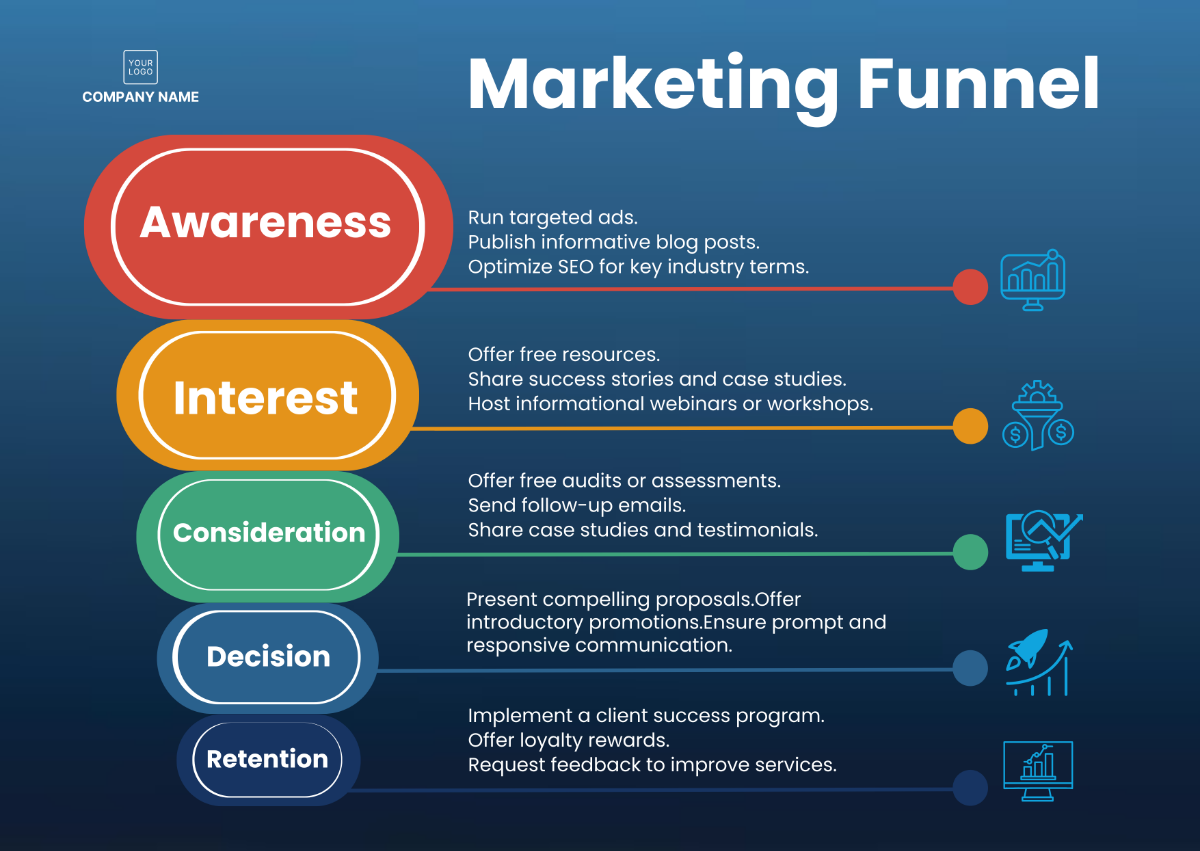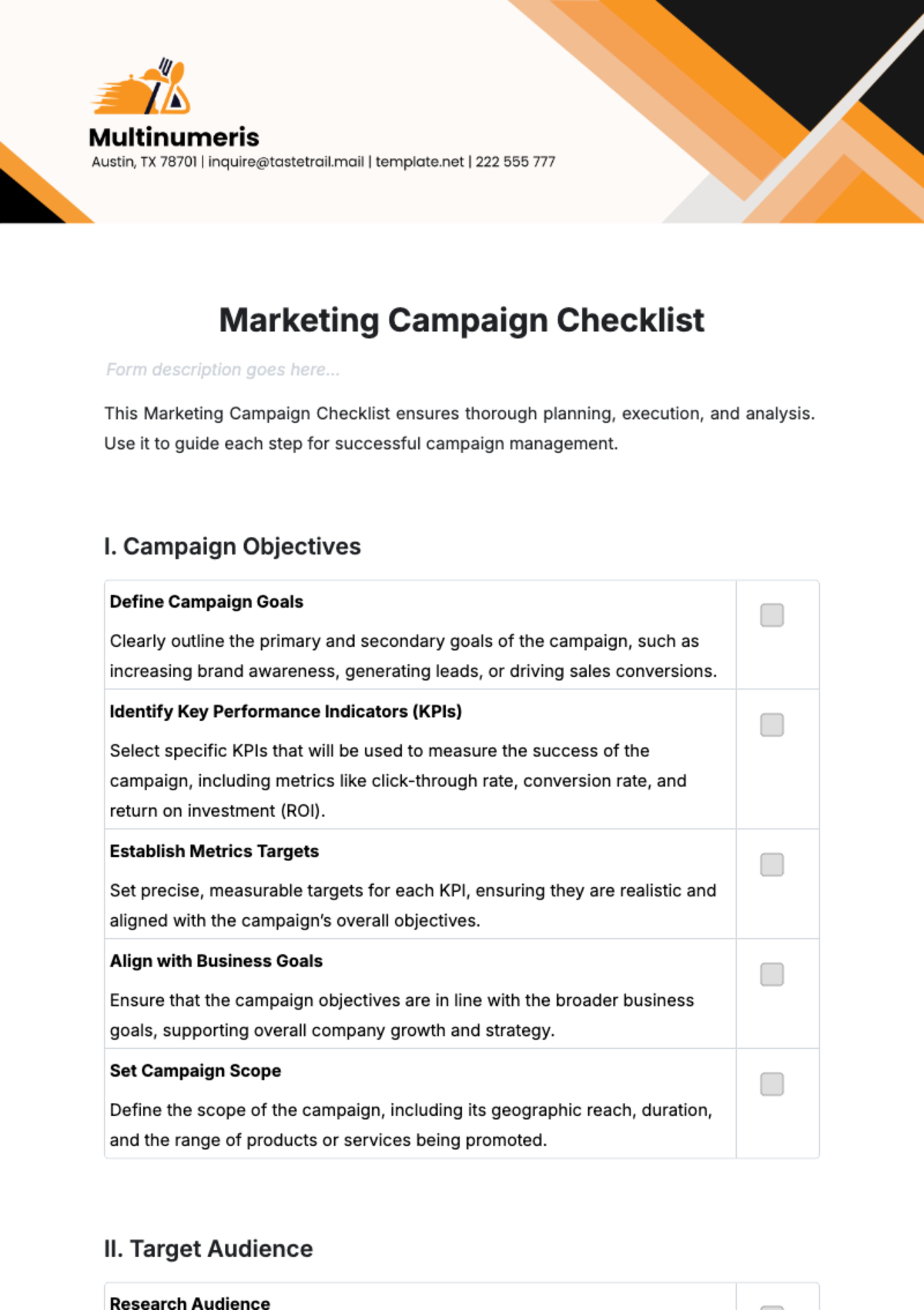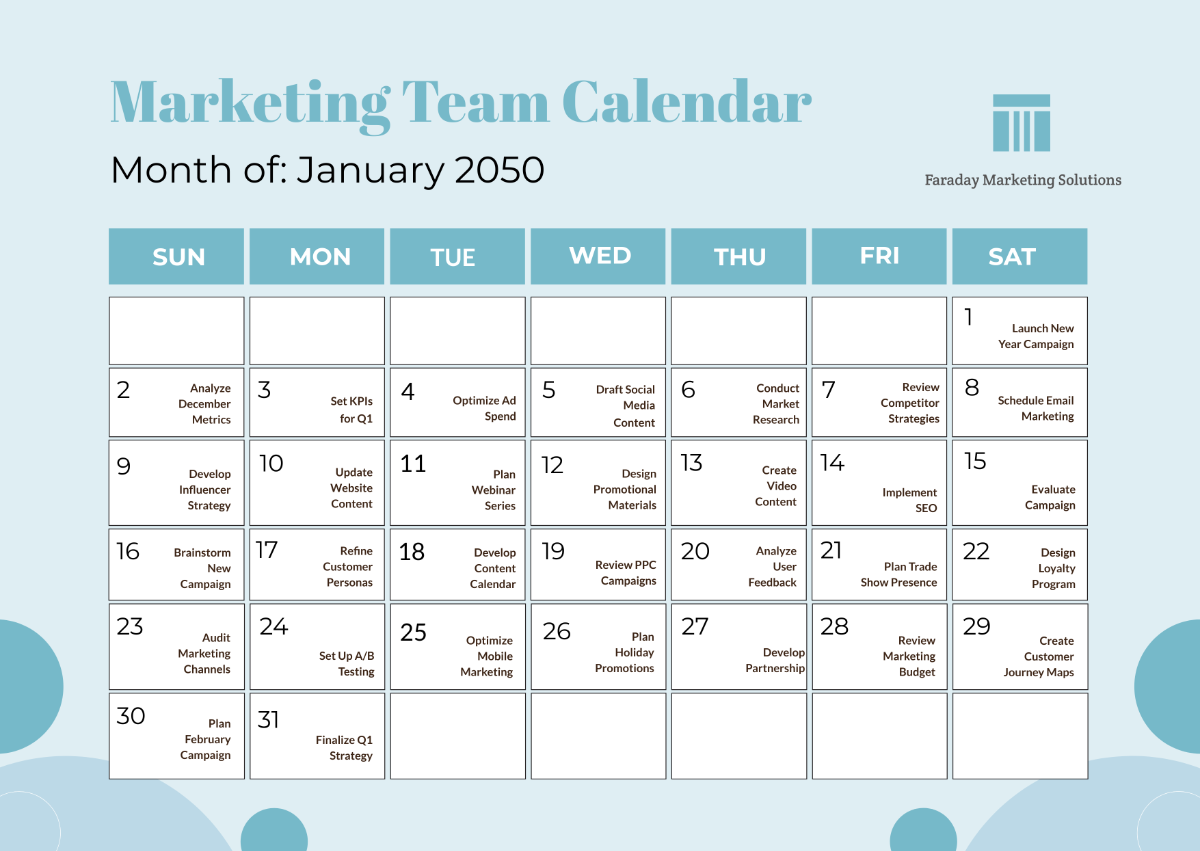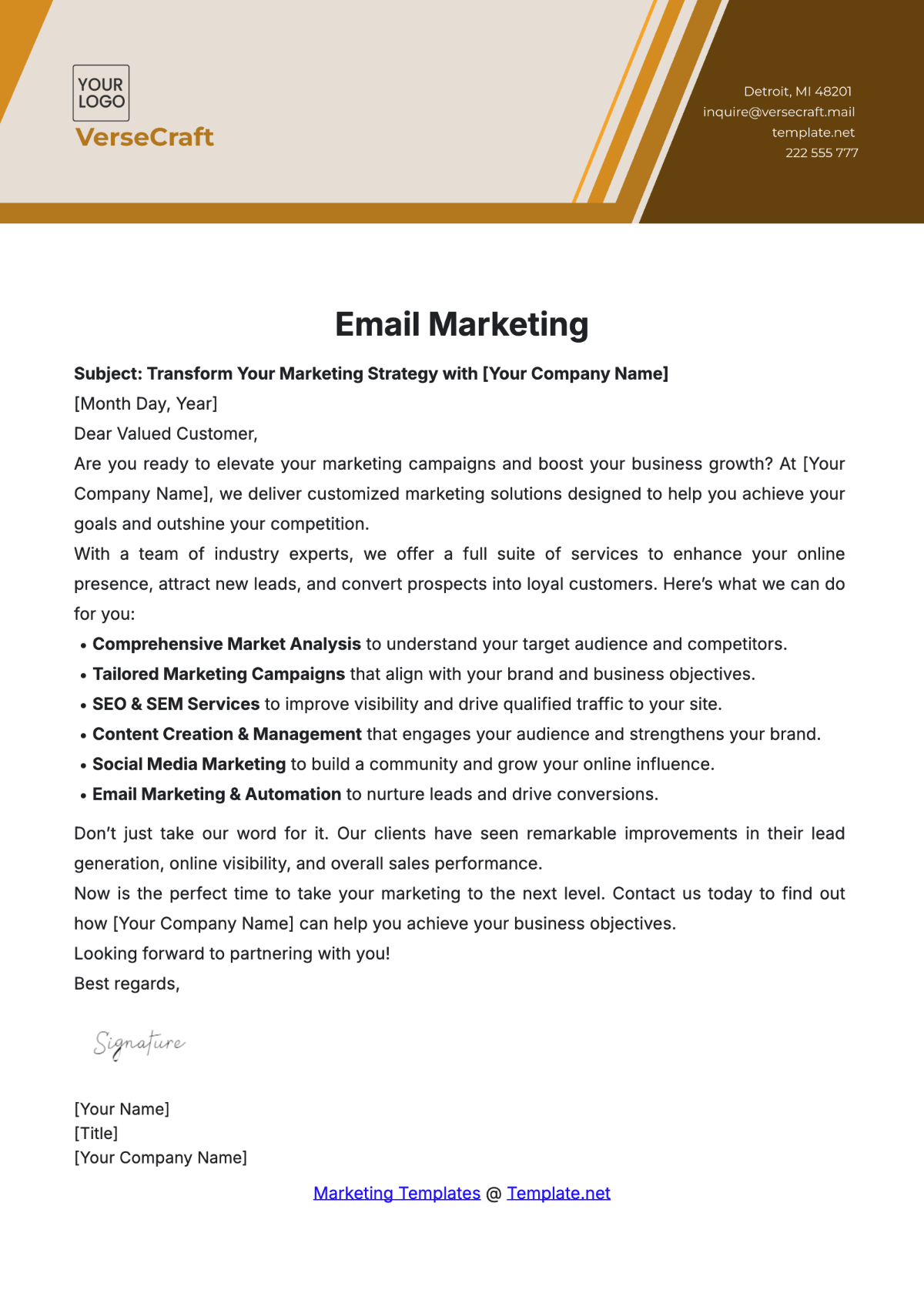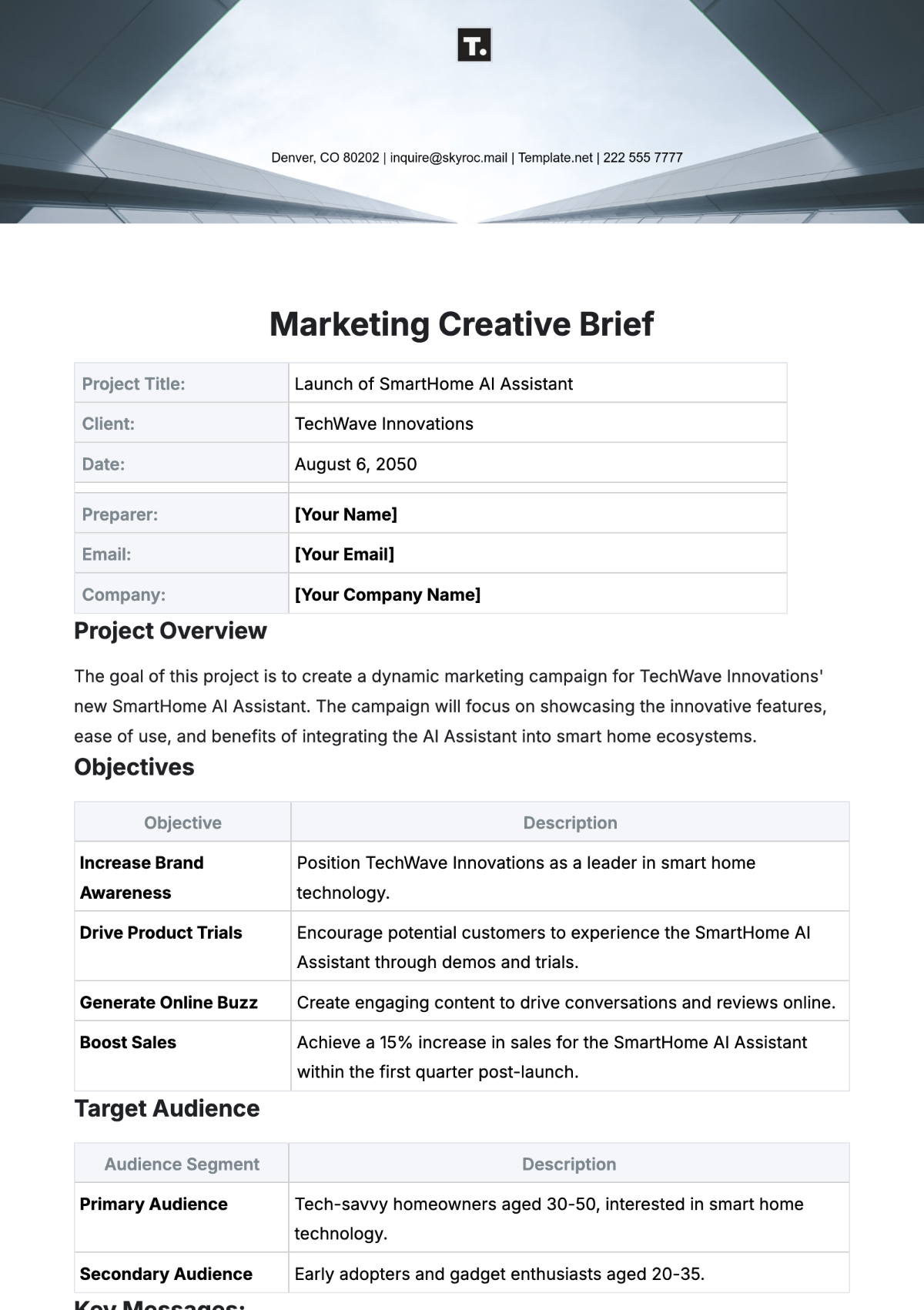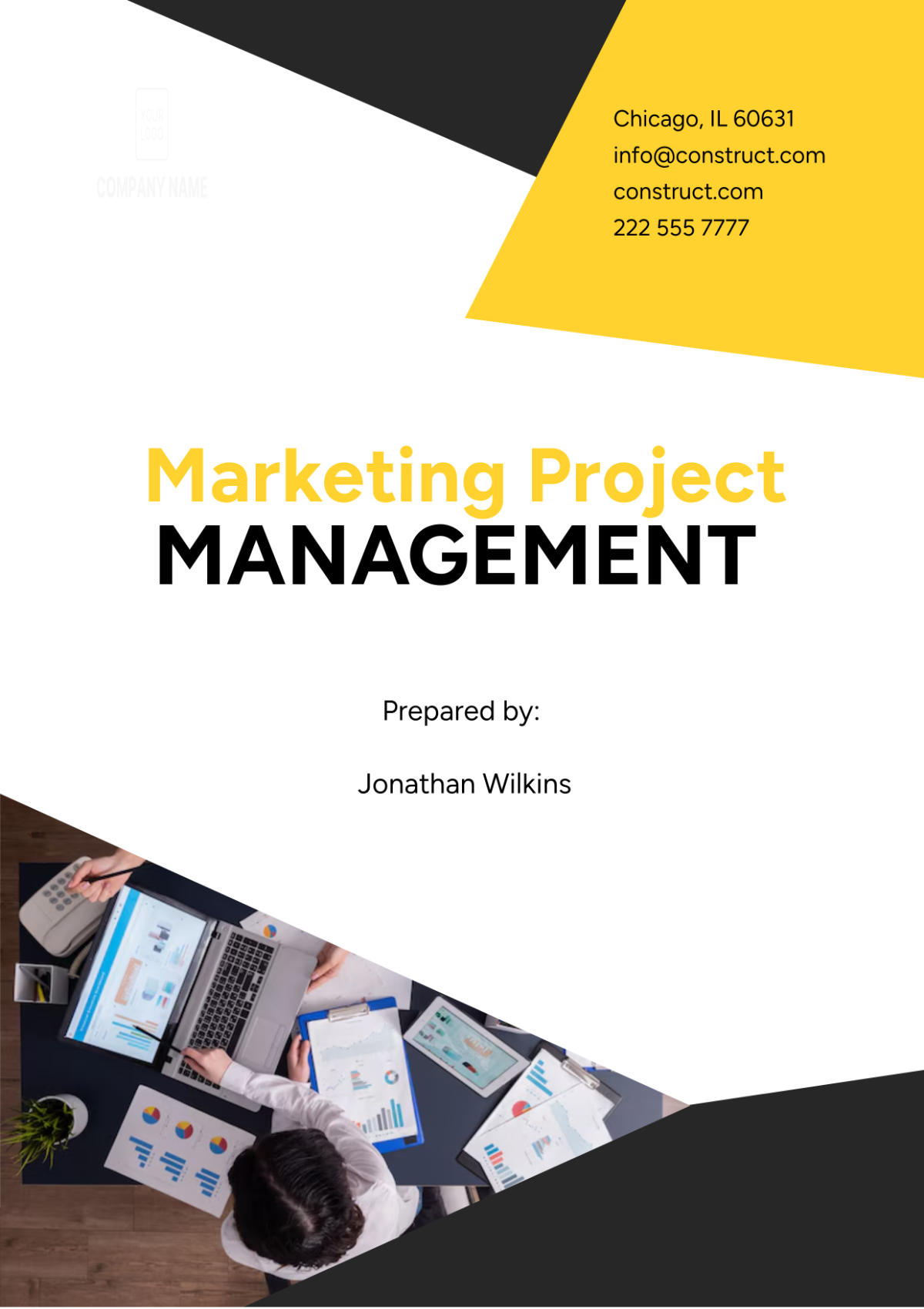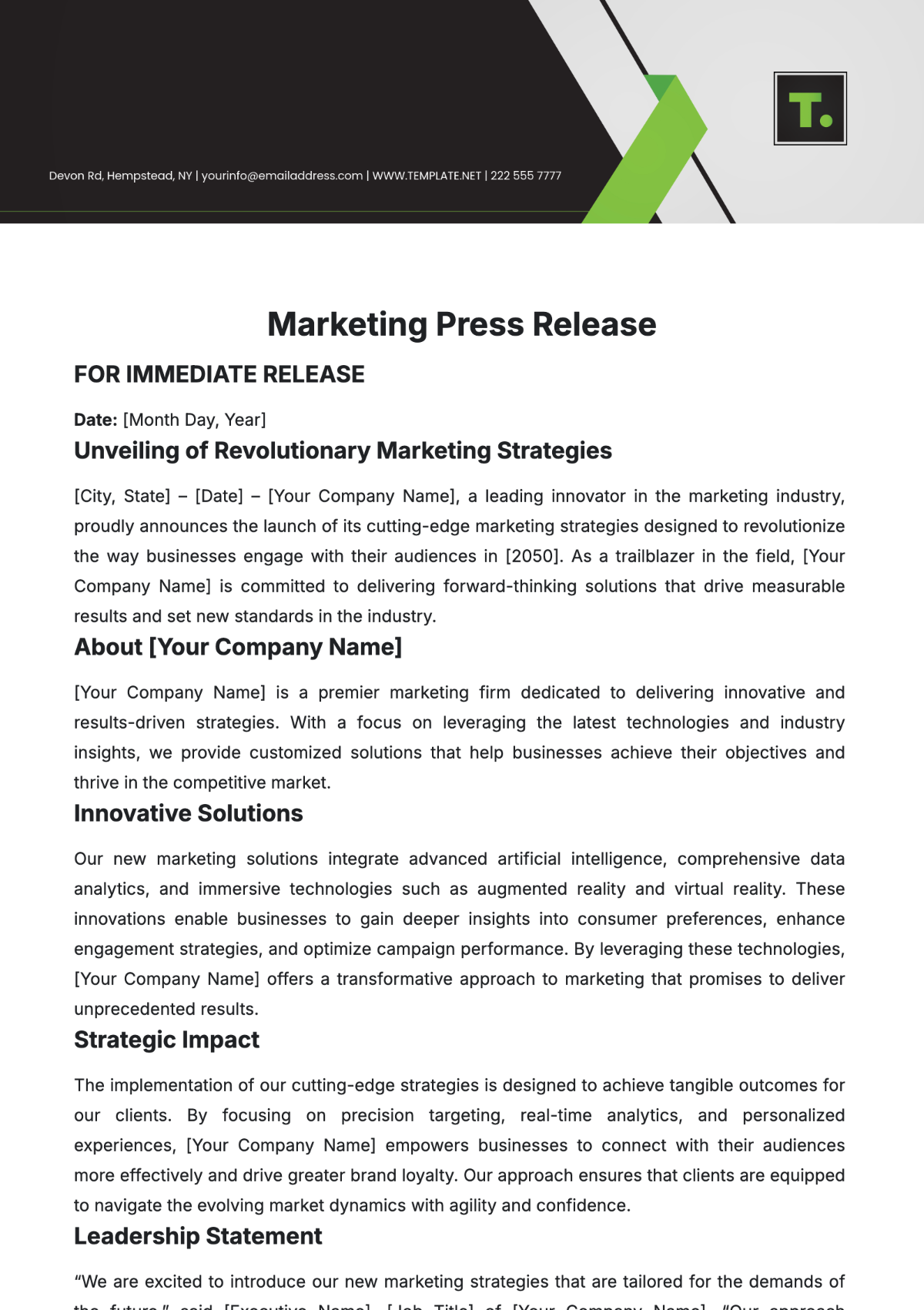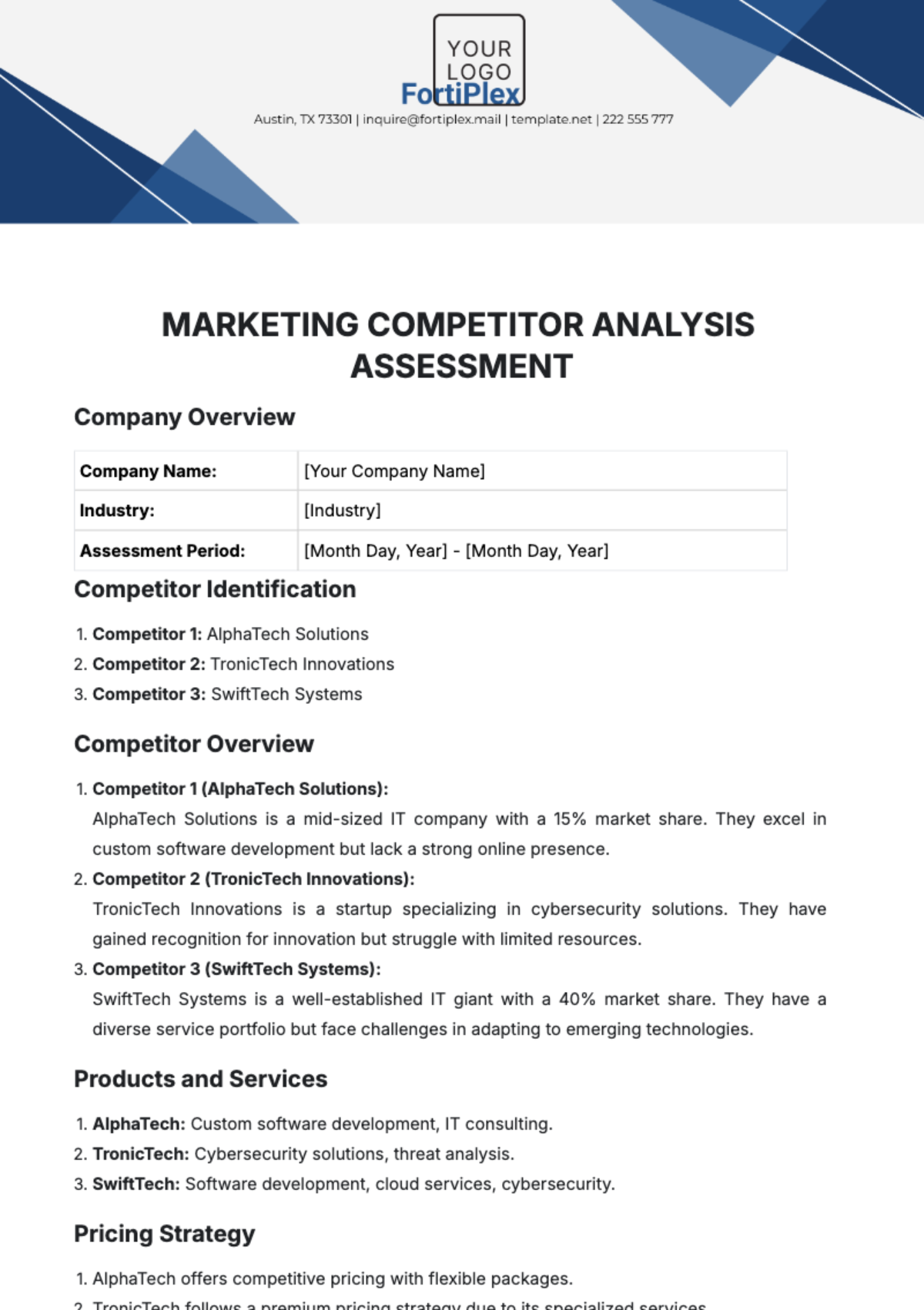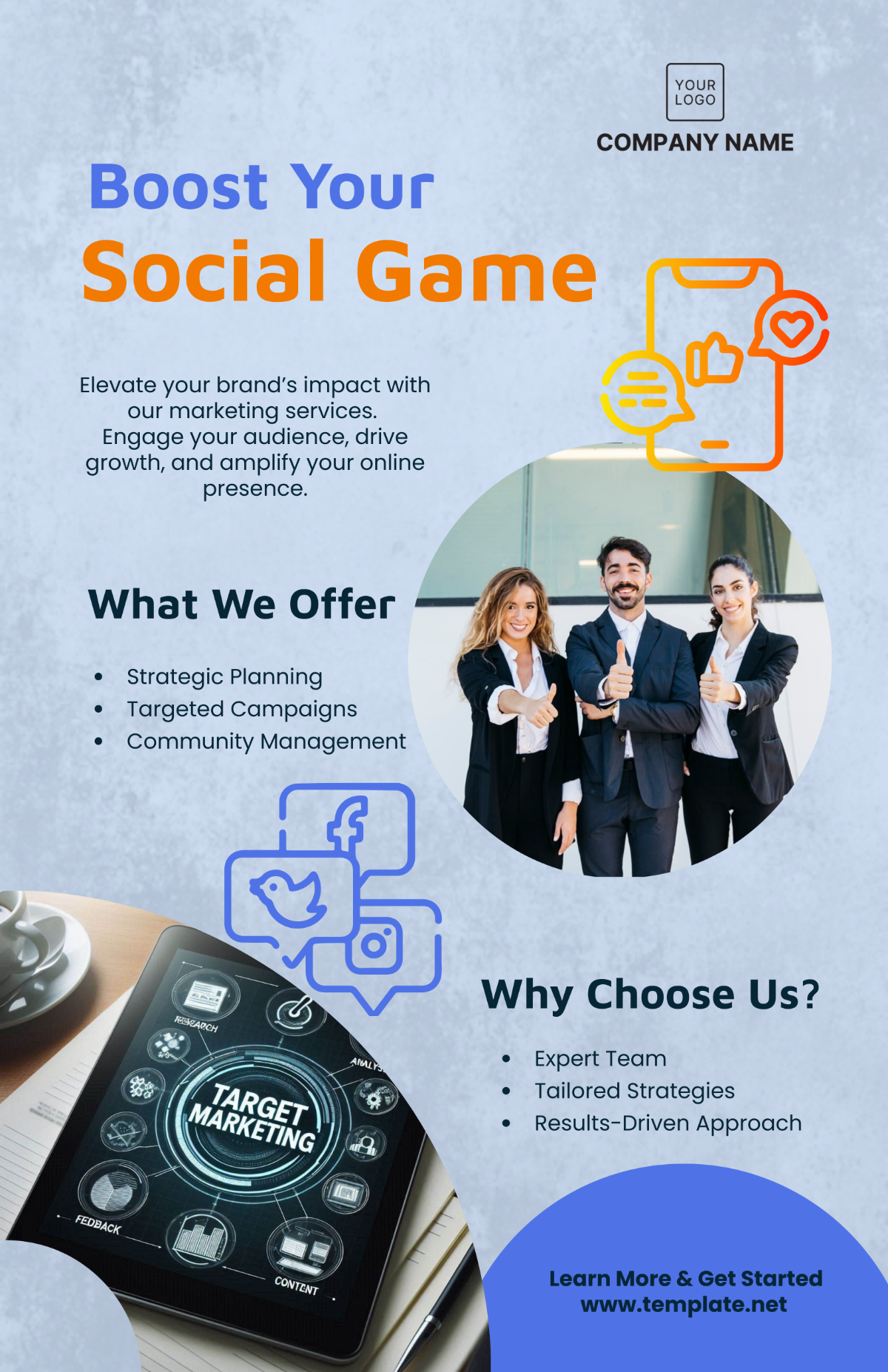Marketing Media Outreach User Guide
I. Introduction
Welcome to the Marketing Media Outreach User Guide, designed to empower marketing professionals like you to excel in media outreach campaigns. This comprehensive guide, brought to you by [Your Company Name], provides expert insights, strategies, and tips to optimize your media outreach efforts. Whether you're seeking to boost brand visibility, secure media coverage, or enhance engagement, this guide is your go-to resource.
II. Target Audience
Defining your target audience is the cornerstone of effective media outreach. As a marketing professional, your success hinges on understanding the demographics, interests, and pain points of your audience. In this section, we provide you with actionable insights and strategies to pinpoint your ideal viewers.
Audience Segmentation
| Research and Analysis
|
Creating Audience Personas
| Tailoring Messages
|
By crafting highly personalized messages, you can engage your intended audience more effectively. This guide equips you to tailor your outreach strategies to match your audience's preferences.
Achieving marketing success begins with understanding your audience.
III. Media Research and List Building
Effective media outreach begins with thorough research and the creation of a well-organized media list. This section will guide you through the critical steps of media research and list building, ensuring that your outreach efforts are targeted and successful.
By mastering the art of media research and list building, you'll be well-prepared to execute targeted media outreach campaigns that increase your brand's visibility and secure valuable coverage
IV. Message and Story Development
Crafting compelling messages and narratives is essential for effective media outreach. In this section, we guide you through the process of developing messages that resonate with your audience and creating engaging stories that capture attention.
V. Media Outreach Strategy
A well-crafted media outreach strategy serves as the compass guiding your brand's interactions with the public. It's the roadmap to navigating the vast landscape of media channels, establishing meaningful connections, and fostering brand growth. In this section, we delve into the essential elements that form the foundation of a successful media outreach strategy:
|
|
A well-rounded media outreach strategy not only helps you navigate the complexities of the media world but also ensures that your brand's message reaches its intended audience.
VI. Pitching and Contacting Media
Crafting compelling pitches and establishing meaningful contacts within the media industry are pivotal steps in your media outreach journey. This section will guide you through the art of creating persuasive pitches and making effective contact with media professionals and influencers:
Pitch Perfectly | Develop pitches that are concise, captivating, and tailored to each recipient. Highlight the relevance of your story or content to their audience. |
Research Contacts | Thoroughly research your media contacts, journalists, and influencers. Understand their beats, preferences, and recent work to personalize your approach. |
Segmented Outreach | Segment your media list based on factors like outlet type, audience, and interests. Tailor your pitches to cater to each segment's unique needs. |
Multi-Channel Approach | Diversify your outreach by using various communication channels such as email, social media, and even traditional methods like phone calls when appropriate. |
Engagement and Follow-Up | Engage with your contacts by commenting on their articles or social posts. Send polite follow-up messages to maintain a relationship. |
Feedback Incorporation | Listen to and incorporate feedback from media professionals to refine your future pitches and content. |
Timing and Relevance | Time your pitches strategically, considering publication deadlines and current events that might relate to your story. |
VII. Follow-Up and Relationship Building
Effective media outreach extends beyond the initial pitch. Building lasting relationships with media professionals and influencers is crucial for continued success. In this section, we explore the strategies and practices for nurturing connections and maximizing your media outreach efforts:
After sending your initial pitch, follow up promptly but courteously. Acknowledge receipt of any feedback or interest expressed.
Offer additional resources, insights, or exclusive content to demonstrate your commitment to providing value to media contacts.
Address media professionals by name and acknowledge their contributions, building a sense of personal connection.
Attend industry events, webinars, and conferences to meet media contacts in person or virtually, fostering stronger relationships.
Engage in meaningful dialogues with media professionals, showing interest in their work and sharing relevant industry updates.
Be transparent in your communications and build trust by delivering on promises and commitments.
Seek opportunities for ongoing collaboration and mutually beneficial partnerships.
By prioritizing follow-up and relationship building, you'll not only enhance your media outreach efforts but also strengthen your brand's reputation and credibility
VIII. Tracking and Measurement
To ensure the effectiveness of your media outreach efforts, it's crucial to implement robust tracking and measurement processes. This section dives into the essential aspects of monitoring and evaluating your campaigns, allowing you to make data-driven decisions and optimize your strategies:
Defining Key Metrics: Identify and prioritize the key performance indicators (KPIs) that align with your media outreach objectives. These may include media coverage, website traffic, engagement rates, or conversion metrics.
Implementing Analytics Tools: Leverage analytics and tracking tools to collect data on the performance of your media outreach campaigns. Popular tools include Google Analytics, social media insights, and email tracking software.
Regular Reporting: Generate regular reports that provide insights into the progress of your campaigns. Share these reports with relevant stakeholders to ensure alignment with overall business goals.
A/B Testing: Conduct A/B tests on various elements of your outreach, such as email subject lines or content formats, to determine what resonates best with your audience.
Campaign Evaluation: Regularly evaluate the success of your media outreach efforts against predefined KPIs. Assess what worked and what needs improvement.
The bar chart below illustrates the comparative media coverage received by three distinct outreach campaigns (Campaign A, B, and C), providing insights into their respective performance.
Iterative Optimization: Based on the data and insights gathered, refine your outreach strategies and messaging to enhance future campaigns.
Budget Allocation: Analyze the cost-effectiveness of your outreach efforts to allocate budgets more efficiently in the future.
IX. Crisis Management
In today's dynamic business landscape, effective crisis management is paramount. This section introduces six essential steps to navigate crises successfully, safeguard your brand's reputation, and ensure swift recovery. Discover how to proactively address and mitigate crises while complying with established legal guidelines.
X. Legal and Ethical Considerations
Navigating crises involves not only effective strategies but also a keen awareness of legal and ethical boundaries. This section delves into the critical aspects of maintaining integrity and compliance during crisis management:
Regulatory Adherence: Ensure strict compliance with industry-specific regulations and legal obligations. This step is foundational to crisis response.
Transparency and Honesty: Uphold transparency in all communications, acknowledging mistakes when necessary. Honesty fosters trust and credibility.
Privacy Protection: Safeguard sensitive data and respect individuals' privacy rights. Adherence to data protection laws is vital, especially in data breaches.
Ethical Decision-Making: Ethical considerations should guide every crisis decision. Strive for fairness, empathy, and social responsibility in actions and messaging.
Legal Counsel Engagement: Collaborate with legal experts to navigate complex legal issues, ensuring decisions align with the law.
Media and Public Relations Compliance: Abide by media regulations and ethical journalism standards when interacting with the press. Accuracy and fairness are paramount.
Documentation: Maintain thorough records of all crisis-related communications and actions for potential legal purposes.
Balancing legal and ethical considerations is non-negotiable in crisis management. Adherence to these principles not only mitigates legal risks but also preserves your brand's reputation and fosters trust among stakeholders. It's imperative to uphold both the letter and the spirit of the law while striving for ethical excellence in times of crisis.


